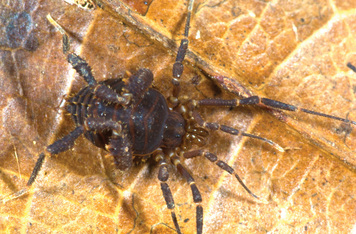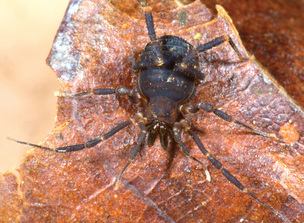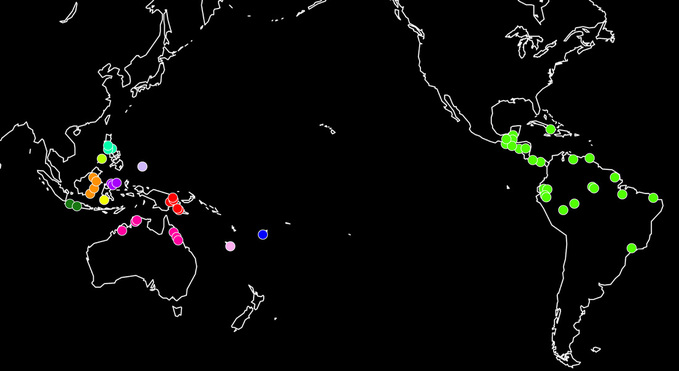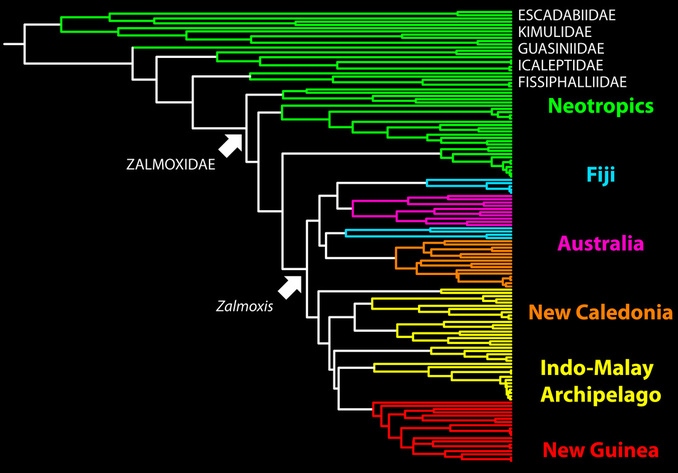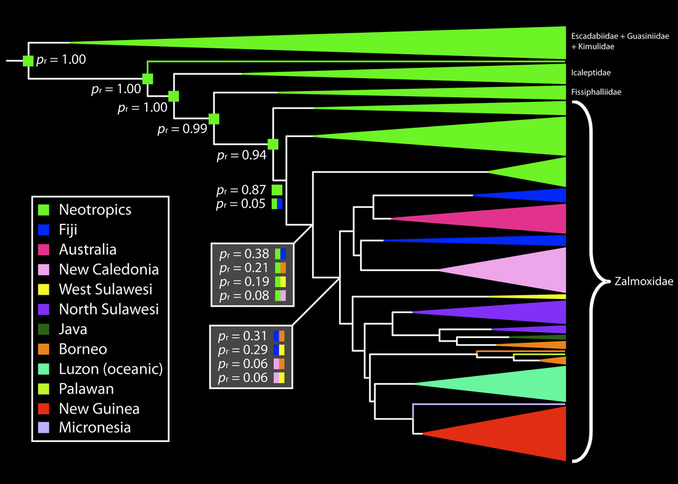Phylogeny and biogeography of
Zalmoxidae (Opiliones, Laniatores)
Zalmoxidae (Opiliones, Laniatores)
Most families of Opiliones (and especially Laniatores) are restricted to specific biogeographic provinces (e.g., the Neotropics, Southeast Asia; see Sandokanidae) or to constituents of former supercontinents (Gondwana and Laurasia). The family Zalmoxidae is an exception, occurring in the tropics of both sides of the Pacific Ocean.
A six-gene phylogenetic analysis indicates that Zalmoxidae is monophyletic. Moreover, the sister families of Zalmoxidae and zalmoxid lineages at the base of the diversification are endemic to the Neotropics. The sole Indo-Pacific genus, Zalmoxis, is a derived lineage.
Molecular dating and model-based approaches to ancestral range reconstruction indicate that Zalmoxidae colonized the Indo-Pacific from the Neotropics by way of trans-Pacific dispersal.

